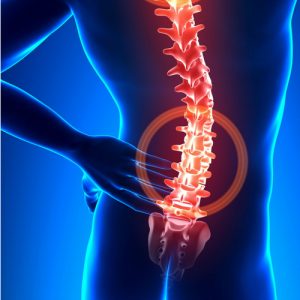Do you know what makes you stand and sit upright? It’s your backbones, I mean your spinal vertebral column which consists of 33 vertebrae!
The lower back is formed by interconnected 5 lumbar vertebrae, muscles, ligaments and nerves that function together to hold us upright. It is highly mobile and complexly structured, with which it becomes more prone to injury.
Lower back pain could be as bearable as a minor headache, withstanding routine work however, it can be as strong as a stabbing pain that will make you surrender and become temporarily disabled. – I should know, it has happened to me on a few occasions and touch wood, since my last episode at uni where I simply went from sit to stand after watching a movie, I didn’t even make it to stand (I was now on the floor in AGONY)!! I have managed my discomfort with treatment, stretching and strengthening, however lets get back to the post!

Whatever it may be, do not wait for your lower back pain to go away by itself. It may or may not subside, even if it did, there are chances it might reoccur. So check in to our clinic in Chelmsford, Essex. We, the Musculoskeletal specialists at Faye Pattison Physiotherapy, provide treatment on a daily basis for back aches and pains. With some decent treatment and relevant stretches/ exercises (if applicable) you too can feel the relief we provide patients every day!
What causes lower back pain?
As mentioned earlier how complex the structures are of the lower back, so are the causes, its complexity presents multiple causes: Poor posture in day to day living is the No.1 cause in our opinion. This leads to a muscle imbalances, Strains in the (usually weak) back muscles and even sprains to the tendons. With increased imbalance within the musculoskeletal system and increased time left untreated, this can lead to more serious problems like a Herniated disc, Spinal stenosis, Spinal fractures which can all lead to having to undergo a more invasive treatment method like surgery.

Symptoms of lower back pain:
- Tenderness on touch
- Pain on positional change
- Pain in bending and twisting motion
- Pain when Standing or sitting
- Pain on lifting heavy objects
- On and off the pain
- Radiating pain.
Lower back pain exercises
Why exercise when you are already in pain? We hear this question often in our Clinic and many remain confused. Well, exercises designed to treat back pain are an essential part of Back Pain treatment. Your back should be mobile and needs to maintain flexibility which treatment will help with to help reduce, eradicate and help prevent back pain.
Following are the benefits and why exercises are included in treatment regime.
- To reduce pain
- To strengthen weakened muscles
- To stretch taut and tensed muscles.
- To reduce stress on spinal structures
- To improve spinal mobility
- To stabilize hypermobile spinal joints
Note: Only an Expert Therapist like a Physiotherapist or Soft Tissue Therapist can prescribe you the right exercises for your specific pain after assessing you.
Following are some examples of exercises that we provide at Faye Pattison Physiotherapy:
- Stretching exercise
Stretching back muscles, hamstrings and calf muscles can help relieve a backache. Stretching exercises basically help tone up taut and tensed back muscles. Stretching helps maintain its muscle length and gain more flexibility which supports the spine in motion without any injury.
- Strengthening exercises
Strengthening exercises include strengthening core muscles, hip muscles, and gluteal muscles. It strengthens weak muscles and condition to its maximum toughness to withstand any stress on the back.
- Spinal extension exercise
The exercise extends the spine, de-stress the compressed spinal structures reducing the pain.
- Spinal flexion exercises
The flexion exercise stretches the back muscles, strengthen hip flexors and open up intervertebral foramina.
- Rotational exercise
These exercises provide overall relaxation of the spinal muscles. It stretches external and internal oblique abdominal muscles which helps to maintain the anterior stability of the spine.
- Pelvic Bridging Exercise
It strengthens your quadriceps, hamstring, abdominal and gluteal muscles. It also contributes gaining spinal mobility.
- Nerve flossing exercise
If the pain is the type of radiating, that starts from your back and ends at your toes, the exercise helps glide the impinged nerve through the tight structures along its course.
Whether you are the victim of lower back pain or your loved ones are, you now know how important exercise can be and what the different types of exercises to treat back pain.
And importantly, if you are residing nearby Chelmsford, Essex, feel free and come visit us our Musculoskeletal Physiotherapy and healthcare Clinic to get started with lower back pain treatment.





